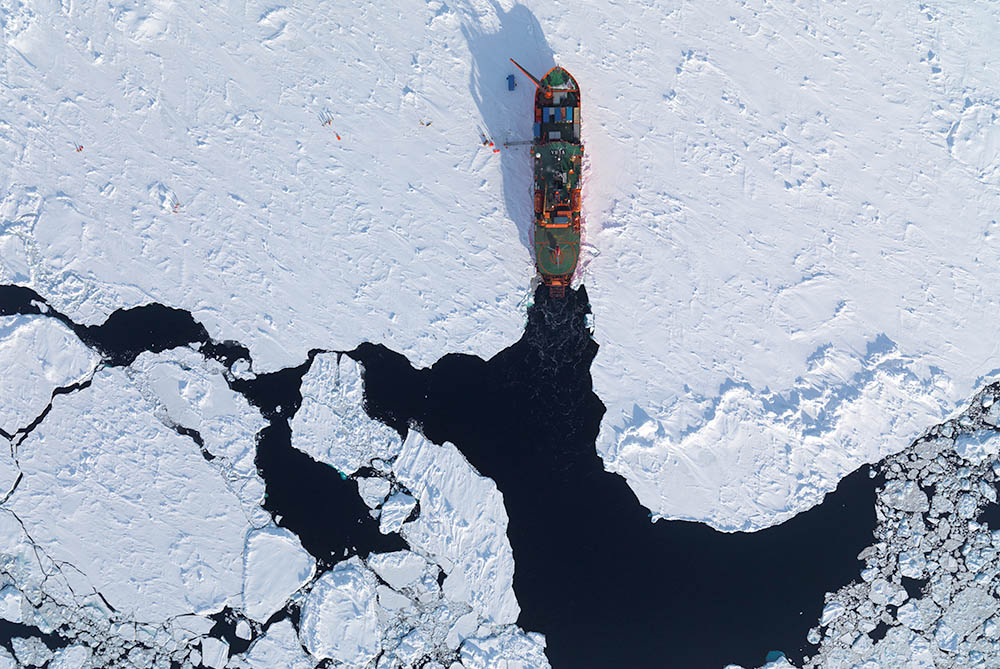MEDIA RELEASE
Antarctic sea ice shrinks to second lowest minimum

Antarctic sea ice has shrunk to its second lowest extent on record, with the latest satellite data showing a total 2.15 million km2 surrounding the icy continent.
This year’s summer low sea ice extent almost broke the existing minimum record of 2.07 million km2, set in March last year when the extent was approximately 27 per cent below the average annual minimum since 1979.
Dr Rob Massom from the Australian Antarctic Division and Antarctic Climate and Ecosystem CRC said the sea ice reached its lowest point on 18 February.
“Since reaching its lowest point, the sea ice has since begun its autumnal re-formation and expansion around Antarctica,” Dr Massom said.
Antarctic sea ice forms each year when the ocean surrounding the continent freezes.
“The ice cover plays a crucially important role both in the global climate system and as a key habitat for a wide range of biota from micro-organisms to great whales.”
“Sea ice conditions also have a major impact on shipping and logistical operations in the Southern Ocean.”
Bureau of Meteorology Antarctic scientist, Dr Phil Reid, said scientists around the world have been tracking Antarctic sea ice via daily satellite observations since the 1970s and the picture has been highly variable.
“Since August 2016, the sea ice coverage has been tracking well below the long-term average,” Dr Reid said.
“In 2017, the winter-time maximum sea ice extent was the second lowest on record at 18.05 million km2 following closely on the heels of successive record highs in 2012, 2013 and 2014.”
“These variations are a significant departure from an overall increasing trend in Antarctic sea ice of about 1.7 per cent each decade since 1979.”
Dr Massom said the drivers of the change and variability in the sea ice extent are at this stage unclear.
“Complex interactions and feedbacks between the ice, atmosphere and ocean are at play, and these vary with season and region,” Dr Massom said.
“Understanding the processes driving sea ice variability and change in the Southern Ocean surrounding Antarctica is a high priority, given the importance of sea ice in the Earth system and the need for improved sea ice forecasting. This represents an exciting challenge for polar and climate research.”
First published on the Australian Antarctic Division website.






















